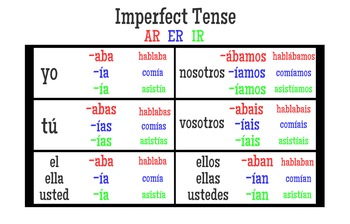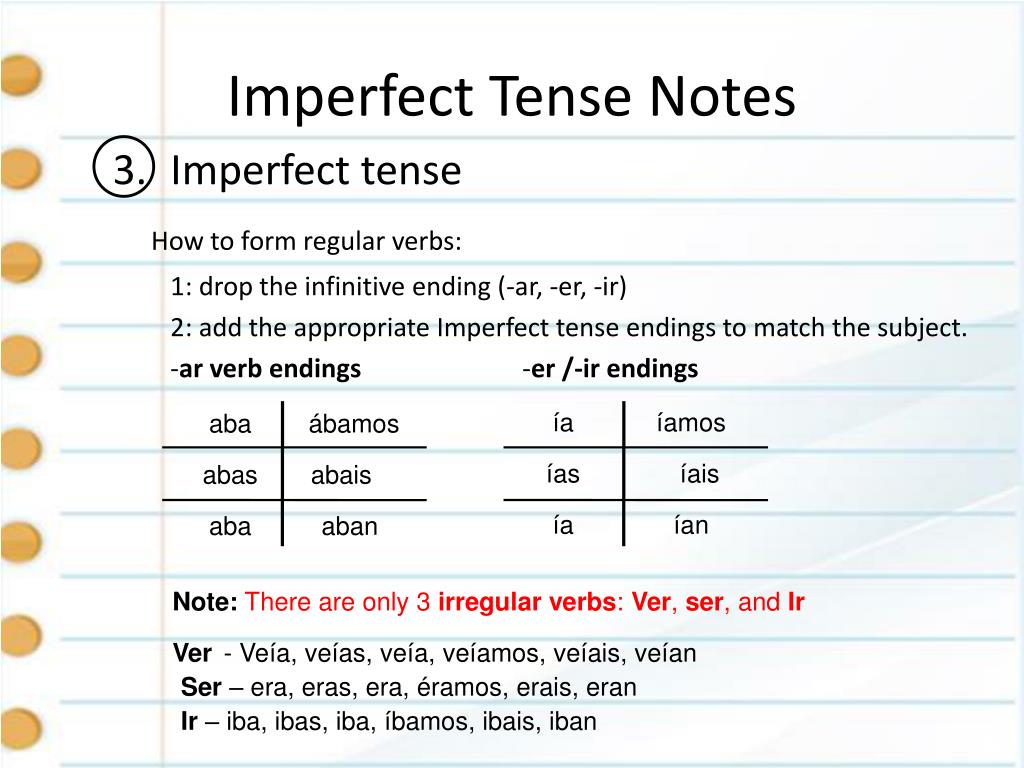

Mayra used to like crossing the bridge, but last week she learned that it isn’t safe. We learn here that Itzel had a routine of crossing the bridge, and we might imagine that this routine was tied to her work in the office.Ī Mayra le gustaba cruzar el puente, pero la semana pasada aprendió que no es seguro. When Itzel worked in the office, she would cross the bridge every day at five. We’re not sure if Álvaro’s parents ended up making it to the other side of the bridge, but we do know that they had the intention to cross the bridge and were in the process of doing so when Álvaro called.Ĭuando Itzel trabajó en la oficina, cruzaba el puente todos los días a las cinco. Álvaro called his parents when they were crossing the bridge yesterday. Álvaro llamó a sus papás cuando cruzaban el puente ayer. Reason for the situation to continue or repeat We use the imperfect when there was an intention, a routine, or a circumstance that made the action ongoing. The imperfect actually tells us something about the world - that there’s an *underlying reason* for an ongoing or repeated action in the past. The imperfect is for situations that are likely to continue or repeat. The reason for the general Spanish past tense tip above, and the less-straightforward exceptions to the English phrase rule, is a bit more complicated. If you're interested in what to do the rest of the time or you're a more advanced learner, read on to learn what's going on behind the scenes. įor most cases, and especially for beginners, that’s the only tip you need! With these English phrases in your pocket, you’ll be able to understand Spanish speakers and get your point across in the vast majority of scenarios. In Spanish, the preterite is used to talk about situations in the past that are viewed as a whole, single chunk: there was a time period in the past, something happened in that time window, now let’s move on.Īlso note that the preterite is often used when we'd use didn't in English, as in I didn’t take a three-hour nap, I didn't visit my grandma, and No, I didn't love catching toads yesterday. Yes, I loved catching toads with you yesterday. Sí, me encantó atrapar sapos contigo ayer. The preterite typically translates to a single past tense word in English. Do we say it with just one word in English? English uses these more complex phrases to talk about these kinds of past situations, and in Spanish you'll use the imperfect!

That's because the imperfect is used for talking about more complex situations in the past - situations spread out over time. While I was taking a nap, my dog ate the couch. Mientras tomaba una siesta, mi perro comió el sofá. When it comes to the imperfect, you're pretty safe remembering that it’s used for these three English multi-word phrases: Imperfect: Do we say it with multiple words in English?.

In most cases, the English version of what you want to say will lead you to the right verb tense, so you can use these pointers for a shortcut! If we need a phrase to say it in English, use the imperfect. One rule of thumb for the Spanish past tensesįirst, let's make a long story short: here is one basic tip for when to use the imperfect and the preterite to talk about the past. So what gives? How do you know what each form means? In this post, we'll be sharing tips and tricks for using Spanish past tenses. And in true Spanish style, they have totally different conjugations and distinct, nuanced meanings. Spanish has two main verb forms for talking about the past, the imperfect and the preterite. And here you'll find answers to your Spanish past tense verb questions! But by the time you get there, you (like me) have probably already fallen in love with the language, so there’s no going back! Luckily, el que busca encuentra: those who seek will find. When you start learning the different Spanish past tense verbs, the verb terrain can get really rocky. If you're a student of Spanish, at some point you've probably felt like a student of verbs: verb endings, verb stems, changes based on people, changes based on groups, and, of course, different tenses.


 0 kommentar(er)
0 kommentar(er)
